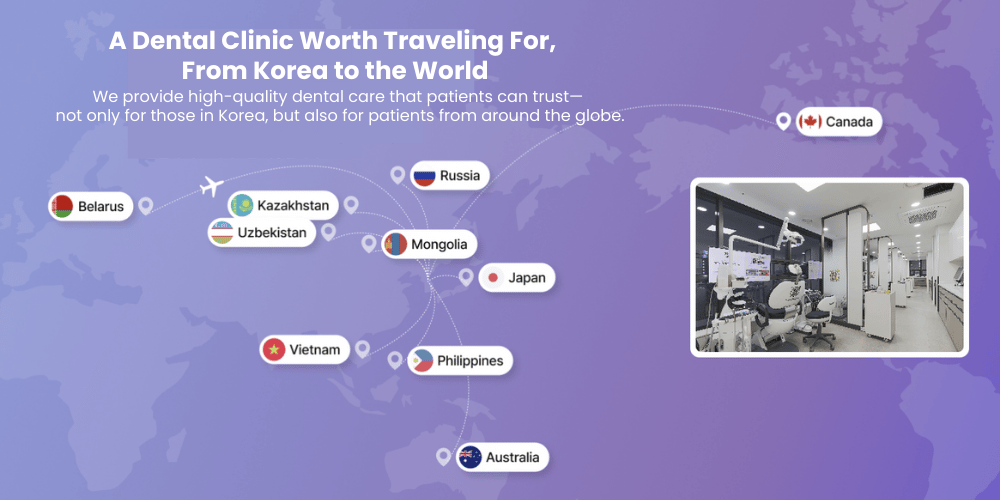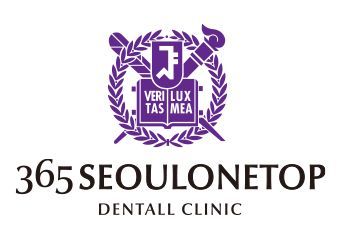Bone Grafting in Seoul
365 Seoul One Top Dental Clinic(Gangseo, Mokdong, Yeongdeungpo)
365 Seoul One Top Dental Clinic provides advanced bone grafting procedures for patients who need stronger bone support before dental implants. Using digital planning, high-quality graft materials, and minimally invasive techniques, the clinic improves bone volume in areas affected by tooth loss, gum disease, or bone resorption. With 365-day availability, patients can schedule grafting and follow-ups at their convenience.
Why Bone Grafting Is Needed
When a tooth is lost or extracted, the jawbone begins to shrink over time. Insufficient bone height or width can compromise implant stability. Bone grafting restores volume, helping create a strong foundation for long-term implant success.
Why Choose 365 Seoul One Top Dental Clinic for Bone Grafting
Digital 3D Imaging & Precision Planning
CBCT scans allow accurate evaluation of bone thickness, density, and structure before graft placement.
Multiple Grafting Techniques
The clinic offers ridge augmentation, socket grafting, sinus lifts, and guided bone regeneration (GBR).
High-Quality Graft Materials
Safe, biocompatible materials promote natural bone regeneration and long-term implant support.
Open 365 Days for Flexible Scheduling
Ideal for patients coordinating bone grafting and implant procedures with busy schedules.
Types of Bone Grafting Procedures
Socket Preservation (After Tooth Extraction)
A graft is placed immediately after extraction to prevent bone loss and prepare for future implants.
Ridge Augmentation
Expands thin or narrow ridges to restore proper bone width for implant placement.
Sinus Lift (Internal or External)
Increases bone height in the upper molar region by lifting the sinus membrane and placing a bone graft.
Guided Bone Regeneration (GBR)
Uses a membrane and graft material to rebuild bone in areas with moderate-to-severe loss.
Bone Grafting for Implant Stability
Strengthens weak bone areas to ensure long-term implant success and prevent future complications.
Your Bone Grafting Process: Step-by-Step
1. Comprehensive Digital Scan
CBCT imaging assesses bone height, density, and structure.
2. Treatment Planning
The dentist determines the graft type, material, and volume needed for optimal implant support.
3. Bone Graft Procedure
The graft material is placed, shaped, and secured, sometimes with a protective membrane.
4. Healing & Bone Integration
Over several months, the graft integrates with natural bone to create strong, stable support.
5. Implant Placement
Once the graft fully heals, dental implants can be placed securely.
Who Is a Good Candidate for Bone Grafting?
- Patients with insufficient bone for implants
- Individuals who lost teeth long ago
- Patients with gum disease-related bone loss
- Those with thin or narrow bone ridges
- Individuals needing sinus elevation for upper-jaw implants
Benefits of Bone Grafting
- Strong foundation for dental implants
- Restores facial structure and jawline support
- Prevents further bone shrinkage
- Improves chewing and long-term oral function
- Enables implant placement even in difficult cases
Additional Implant & Restorative Services at 365 Seoul One Top Dental Clinic
Dental Implants
Digital-guided implant placement with immediate or delayed loading options.
Sinus Lift Surgery
Internal and external sinus lift techniques for implant preparation.
Implant Dentures & Full-Arch Solutions
Options for patients missing multiple teeth.
Crown & Bridge Restorations
Natural-looking restorations to complete implant treatment.
General Dentistry
Cleanings, fillings, gum therapy, and routine examinations.
Location & Hours
Clinic Name:
365 Seoul One Top Dental Clinic (365서울원탑치과의원)
Address:
3F, Dongmyeong M Building
179 Gangseo-ro, Gangseo-gu, Seoul, South Korea
Phone: 010-2762-3828 (WhatsApp Available)
Hours:
- Mon–Fri: 09:30–20:00
- Weekends & Holidays: 09:30–17:00
- Lunch Break: 12:30–14:00
- Open 365 Days
How to Book a Bone Grafting Consultation
Patients may call the clinic or submit a short online inquiry including their implant goals. The team will schedule a scan and provide a personalized grafting plan.




